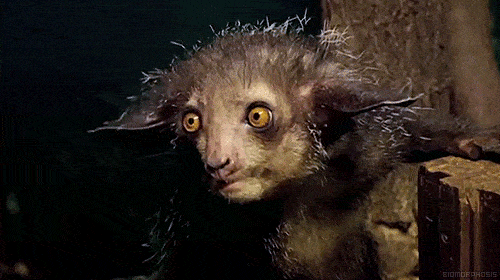Human imagination has created mythical beasts for centuries and centuries but the creatures that do live on Earth are even more amazing than the legends. Here are just some of those magnificent creatures, both big and small, that look just too crazy to be real.
Tardigrades
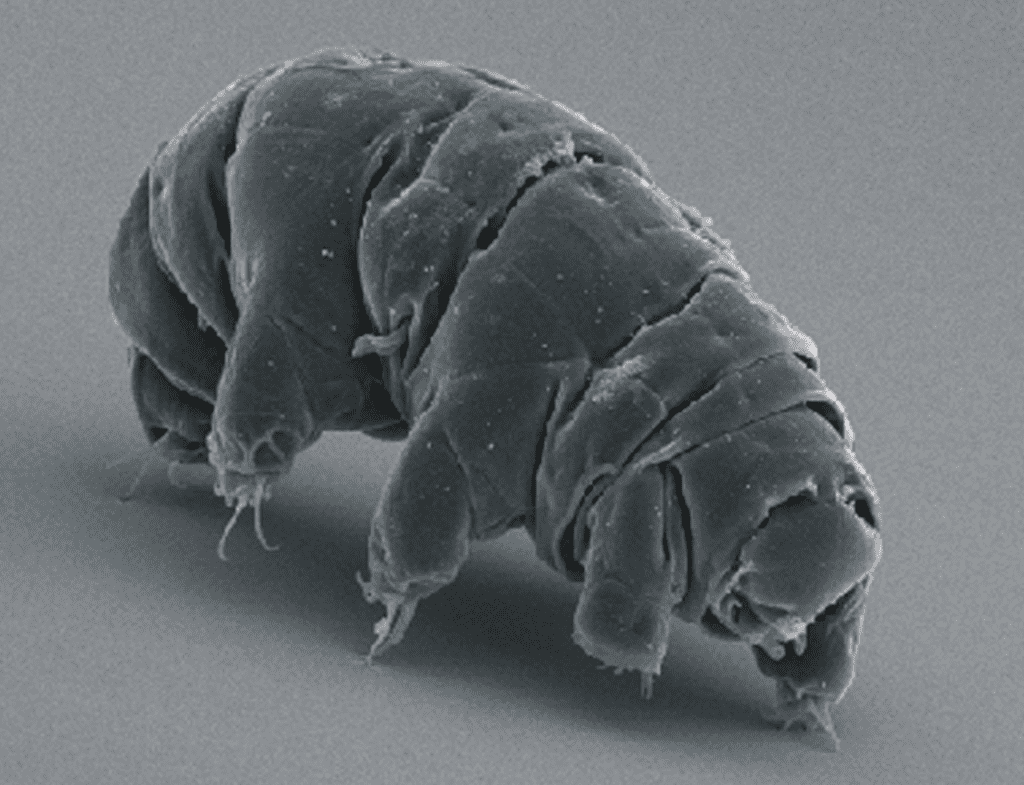
We’ll start out small, because tardigrades are just mind-blowingly impressive. They can survive in some of the most hellish environments you can imagine: temperatures of only a few degrees above absolute zero and withstand pressures higher than the deepest depths of the ocean. They can survive without any water for up to ten years and can live through very high levels of nuclear radiation. They’re really good at surviving.
Sure, you might say, but there are other bacteria that can also do this. Well, bacteria are single-celled creatures, whereas tardigrades are complex, multicellular creatures. They have a tubular mouth armed with stylets used to pierce plant cells, algae or small invertebrates and four pairs of stubby legs. They even have a brain (or rather a cluster of neurons). As far as complex creatures go, tardigrades are the ultimate survivor.
Anglerfish

When your name means you’re a fisherman fish, something’s definitely strange. Most species of anglerfish are deep sea dwellers, which means they live at incredible depths, thriving in the abyssal oceans. They typically have one long filament sprouting from the middle of their heads which they wiggle to resemble a smaller creature and bait in unsuspecting fish.
But as if that weren’t strange enough, scientists were at one point surprised that they didn’t find any male angler fish, and all the females seemed to have a strange parasite. After a while, they realized that the “parasite” was actually a male – attached to a female and surviving only to fertilize the female when she is ready to spawn.
The Aye-aye
Strange creatures aren’t just tiny or marine – the Aye-aye is one of the strangest things I’ve ever seen. Exclusively found in the north-eastern parts of Madagascar, these peculiarly looking primates have big eyes and slender, long fingers – with a much larger middle finger used for finding insect larvae under tree bark.
Unfortunately, due to their bizarre appearance, ancient legends of Malagasy considered them to be a very bad omen and usually killed them on sight. For this reason, fewer than 1000 specimens still remain in the wild. The species is now protected, however.
The Gerenuk
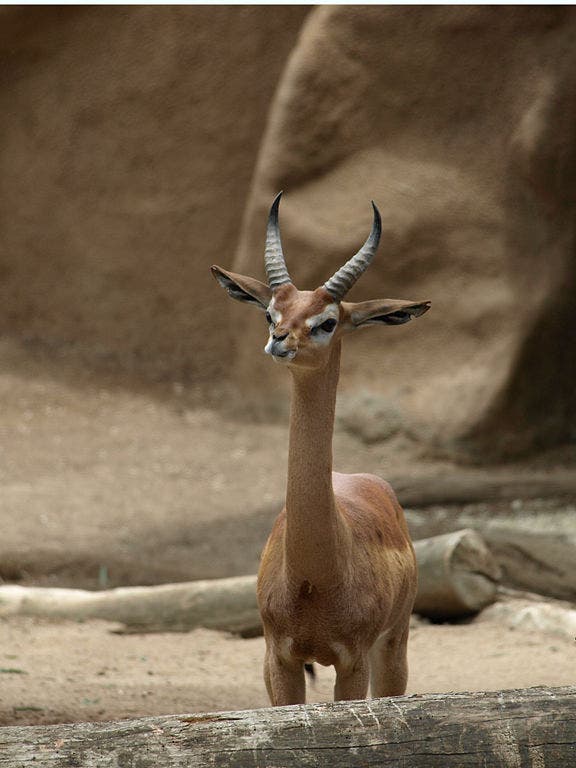
No, the neck hasn’t been photoshopped. Also known as Waller’s gazelle, Gerenuks have highly elongated necks which they used for reaching higher plants. They also feature very long legs which they use to sprint away from danger.
Gerenuks do not appear to drink water; they get enough water from the plants they eat. They are also very fast and are often able to escape predators.
Umbonia spinosa
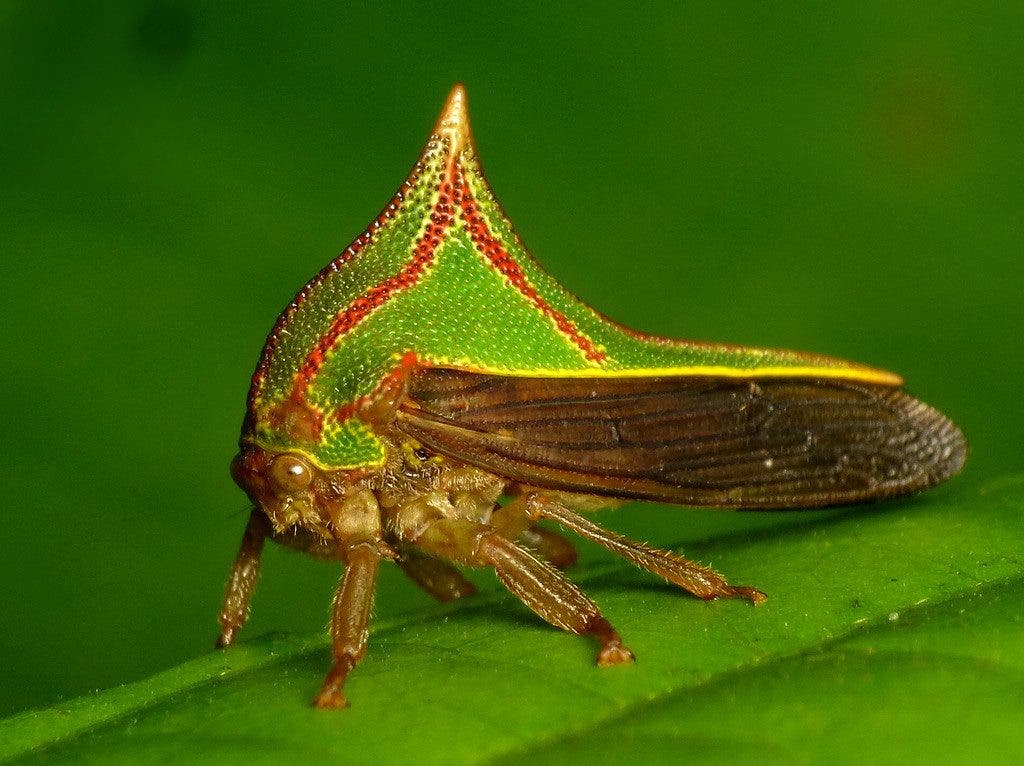
Also known as the Treehopper, this is a species related to cicadas. Not much is known about them, but they do use their beaks to pierce through plants and then feed on the sap.
The dorsal horn gradually tapers to a point from base to summit, similar to a thorn in appearance. It lives in many areas of South America.
Yeti Crab

Crabs are a strange bunch themselves, but the Yeti Crab has to take the crown. Discovered only in 2005, the species is only 15 cm long and is notable for the sheer quantity of silky blond setae (resembling fur) covering its pereiopods (thoracic legs, including claws).
It lives in the very South of the Pacific Ocean, has very small eyes that lack pigment and is thought to be blind – or almost blind. It lives in a very particular environment, on the bottom of the ocean, close to hydrothermal vents. The “hairy” pincers contain filamentous bacteria, which the creature may use to detoxify poisonous minerals from the water emitted by the hydrothermal vents where it lives.
Saiga antelope
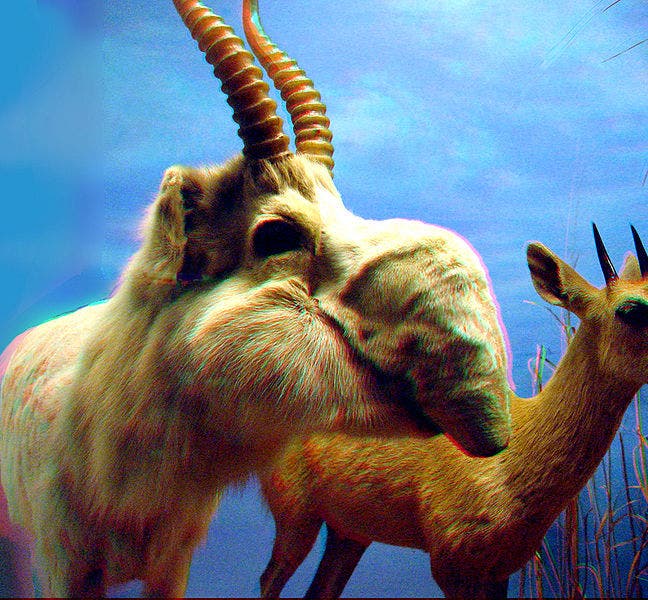
They were once ubiquitous in the European steppes but now, they’ve almost been hunted to extinction. At the beginning of the 18th century, it was still distributed from the shores of the Black Sea, but today, its habitat has greatly shrunk.
The Saiga antelope is a critically endangered species that originally inhabited a vast area of the Eurasian steppe zone from the foothills of the Carpathian Mountains all the way to Mongolia. Even today, the species continues to decline. The horn of the saiga antelope is used in traditional Chinese medicine and can sell for as much as $150 — which is why the species is hunted extensively.
Star-nosed mole

The star-nosed mole is one of the most recognizable creatures in the animal kingdom, having twenty-two pink fleshy appendages ringing its snout, which is used as a touch organ with more than 25,000 minute sensory receptors. With these organs, it is perfectly equipped to detect seismic waves.
The star-nosed mole lives in wet lowland areas in the Eastern US and Canada and eats small invertebrates, aquatic insects, worms, mollusks, small amphibians and small fish.
Lowland streaked tenrec
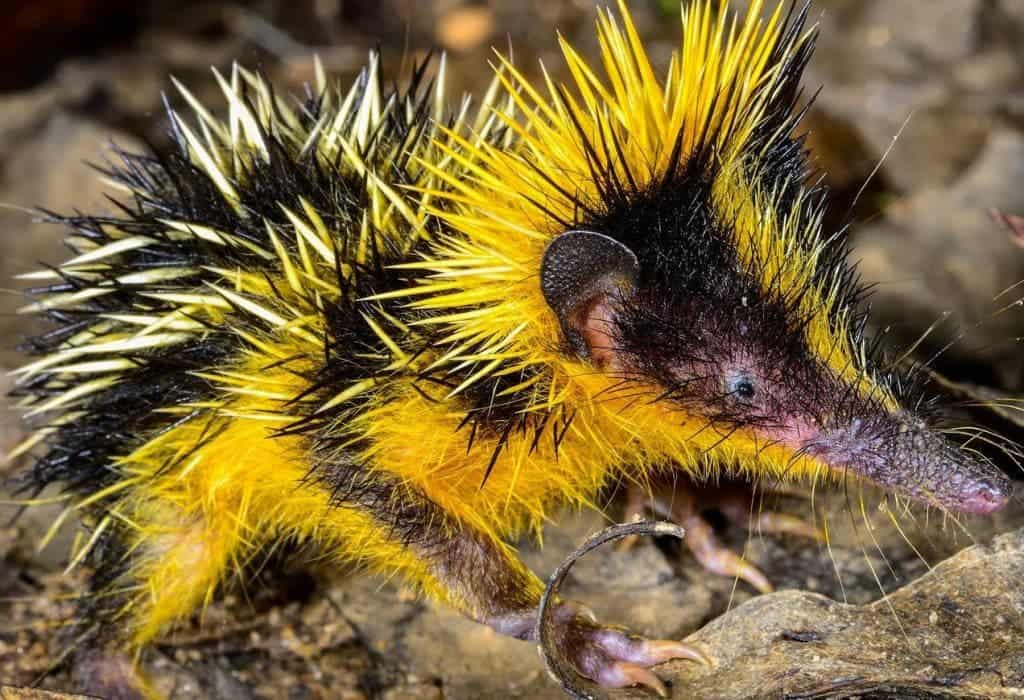
After the aye-aye, we’re back again in the Madagascar for a creature that’s just as weird. The lowland streaked tenrec is a strange mixture of hedgehog, shrew, mouse and even otter.
If threatened by a predator, it erects the barbed quills on its back and on the crest around its head, pointing them completely forward and then moving towards the attacker. The nonbarbed quills on the back are used to make a rattling sound to communicate with others.
Turritopsis dohrnii
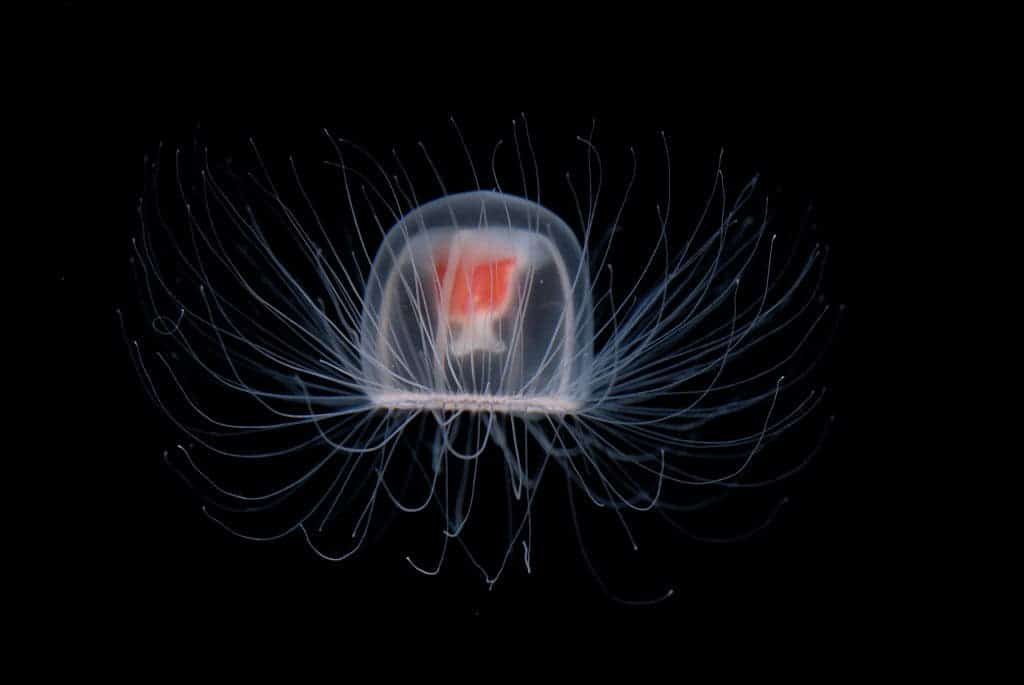
This small creature might not look like much but it is, from what we know, the only immortal animal in the world.
Found in the Mediterranean Sea and in the waters of Japan, it can revert completely to a sexually immature, colonial stage after having reached sexual maturity as a solitary individual; according to studies conducted on it, it can do this indefinitely without any repercussions, becoming effectively immortal.
Sparklemuffin and Skeletorus spiders
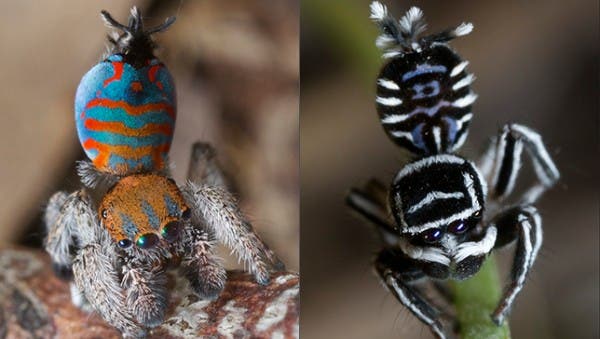
Earlier this year, scientists reported the discovery of two new spider species which are, for the lack of a better word, extremely cute.
The species are a part of the jumping spider family, belonging to the peacock spider genus. They’re called peacock spiders not only because they are so brightly colored, but also due to their dancelike, courtship rituals. The two new species were found in southeast Queensland by Madeline Girard, a graduate student at the University of California.
The bubble eye goldfish

The name is pretty self-explanatory – this fancy goldfish is mostly kept in aquariums. The bubbles are fragile and can break, though they will regrow if punctured.
The bubbles can disadvantage the fish as it is not a strong swimmer, with a seemingly low bobbing head at times.
Red-lipped batfish
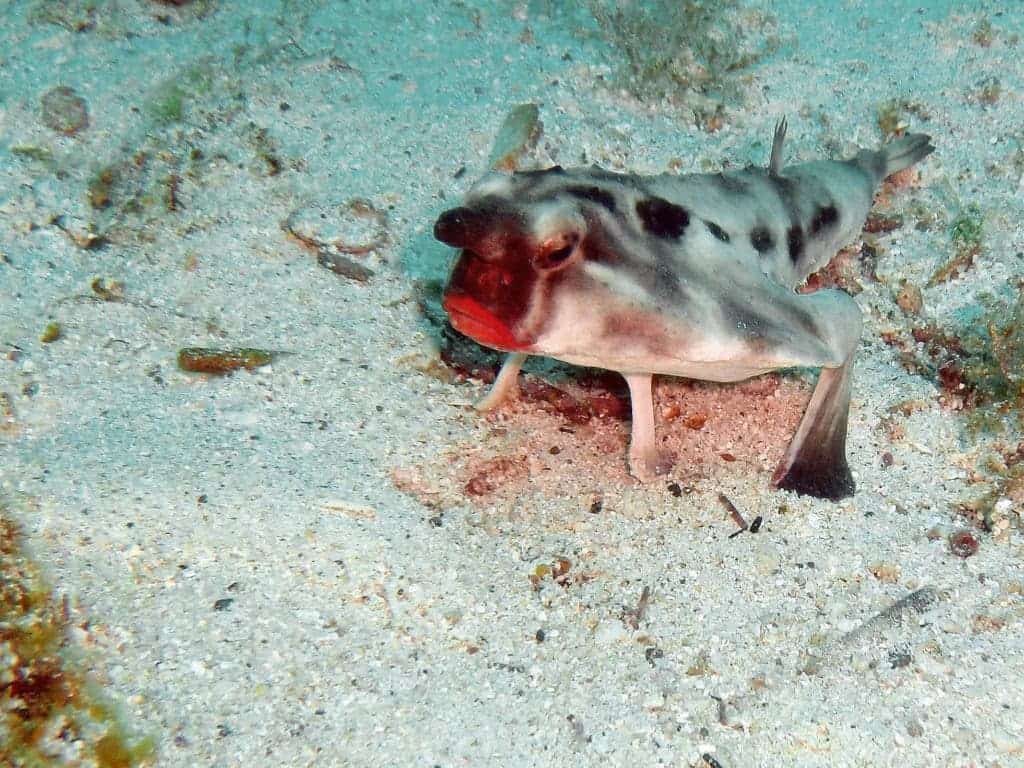
The red-lipped batfish or Galapagos batfish has a very strange morphology with bright red lips and fins more adapted for walking than swimming.
When the batfish reaches maturity, its dorsal fin becomes a single spine-like projection (thought to function primarily as a lure for prey). They’re pretty bad swimmers, preferring to walk on the seafloor instead of swimming. It is believed that their bright red lips serve to enhance species recognition during spawning.
Dumbo Octopus
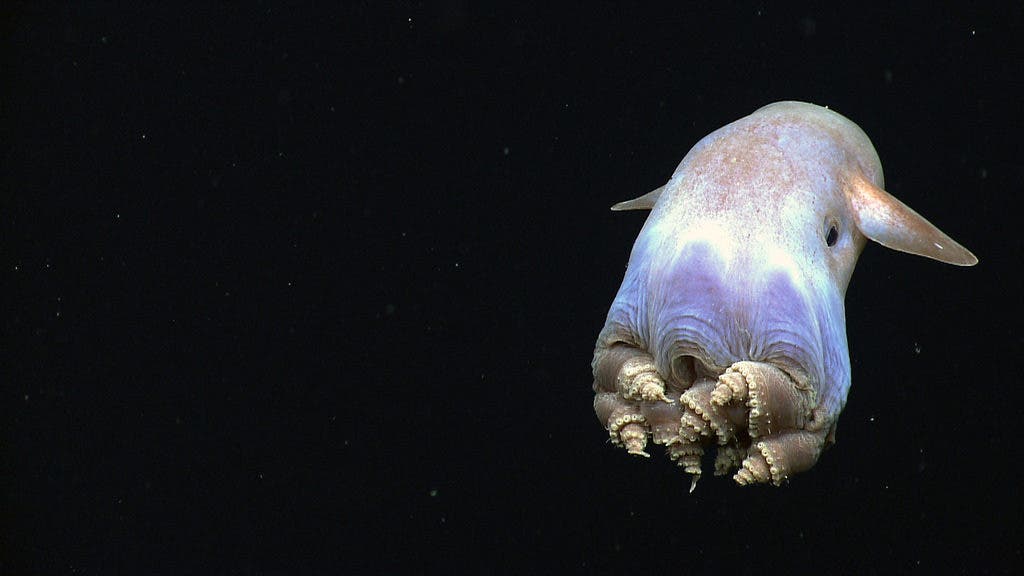
We’re staying in the oceans for the next one. They may look cute, but they’re extremely resilient. The Dumbo octopus lives at extreme depths of 3,000 to 4,000 metres (9,800 to 13,100 ft) with some living up to 7,000 metres (23,000 ft) below sea level.
The largest Dumbo octopus ever recorded was 1.8 metres (5.9 ft) in length and weighed 5.9 kilograms (13 lb) but average specimens rarely go over 30 centimeters.
Gobi jerboa
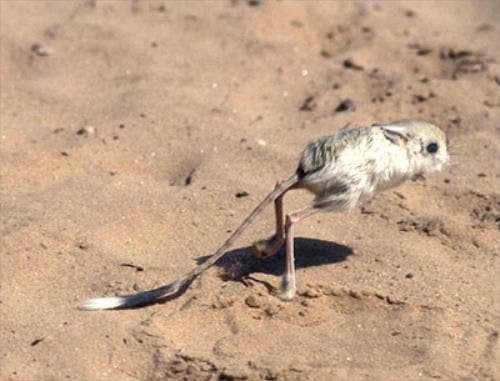
This species of rodent is found in the deserts and grasslands of China and Mongolia.
The very long tail helps its very long legs run even faster, and despite not visible in this picture, their ears are generally extremely large – even larger than their heads. The big ears not only allow them to hear better, but are efficient at dissipating heat, a much-needed attribute in the hot deserts.
Barreleye
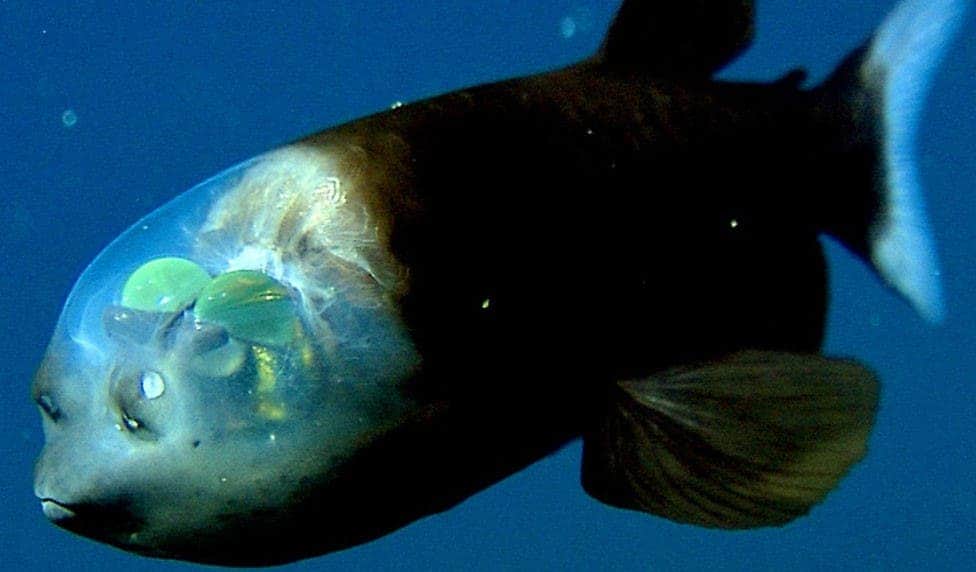
The Barreleye is another deep-sea fish, remarkable for the transparency of its head.
All species have large, telescoping eyes, which dominate and protrude from the head, but are enclosed within a large transparent dome of soft tissue. The eyes generally look upwards but can also be directed forward and the transparency of their heads enhance the vision.
When looking at these remarkable creatures, it’s important to note that this is not a freak show – let’s celebrate our planet’s biodiversity instead of fearing it.
